Abstract
We have examined the kinetics of the process by which ribosomes are exported from the nucleus to the cytoplasm using Xenopus laevis oocytes microinjected into the germinal vesicle with radiolabeled ribosomes or ribosomal subunits from X. laevis, Tetrahymena thermophila, or Escherichia coli. Microinjected eukaryotic mature ribosomes are redistributed into the oocyte cytoplasm by an apparent carrier-mediated transport process that exhibits saturation kinetics as increasing amounts of ribosomes are injected. T. thermophila ribosomes are competent to traverse the Xenopus nuclear envelope, suggesting that the basic mechanism underlying ribosome transport is evolutionarily conserved. Microinjected E. coli ribosomes are not transported in this system, indicating that prokaryotic ribosomes lack the "signals" required for transport. Surprisingly, coinjected small (40S) and large (60S) subunits from T. thermophila are transported significantly faster than individual subunits. These observations support a facilitated transport model for the translocation of ribosomal subunits as separate units across the nuclear envelope whereby the transport rate of 60S or 40S subunits is enhanced by the presence of the partner subunit. Although the basic features of the transport mechanism have been preserved through evolution, other aspects of the process may be mediated through species-specific interactions. We hypothesize that a species-specific nuclear 40S-60S subunit association may expedite the transport of individual subunits across the nuclear envelope.
Full text
PDF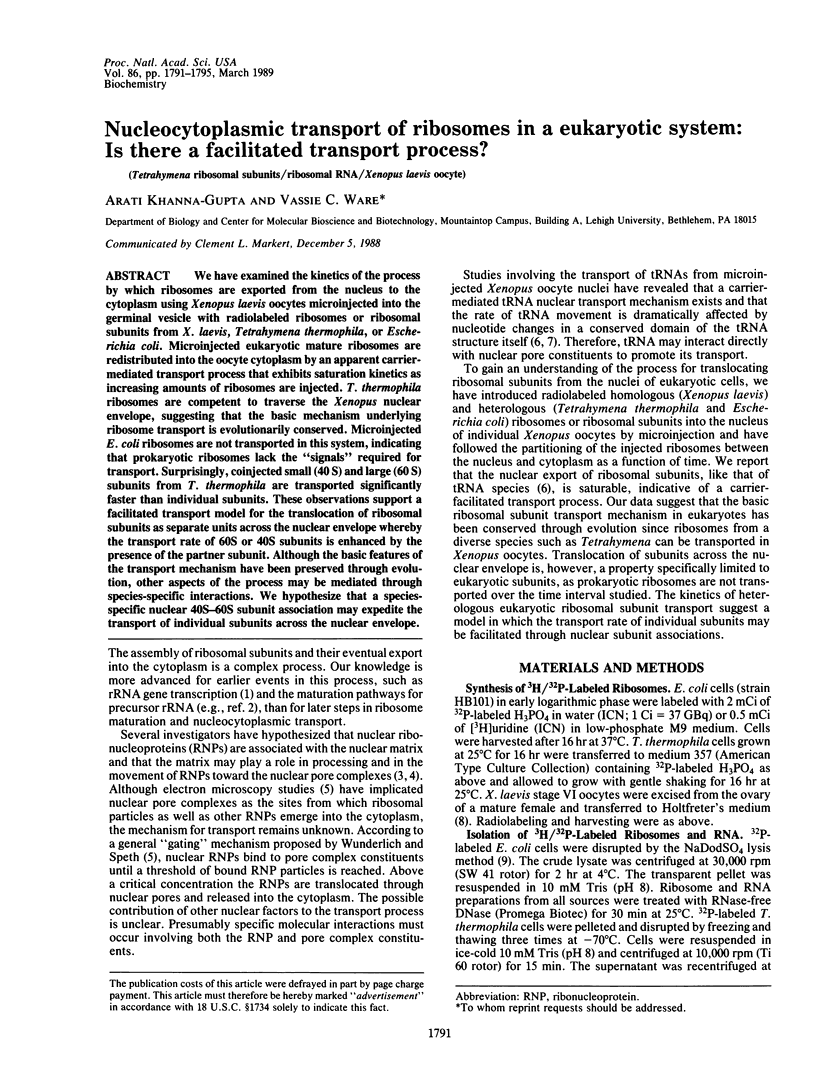
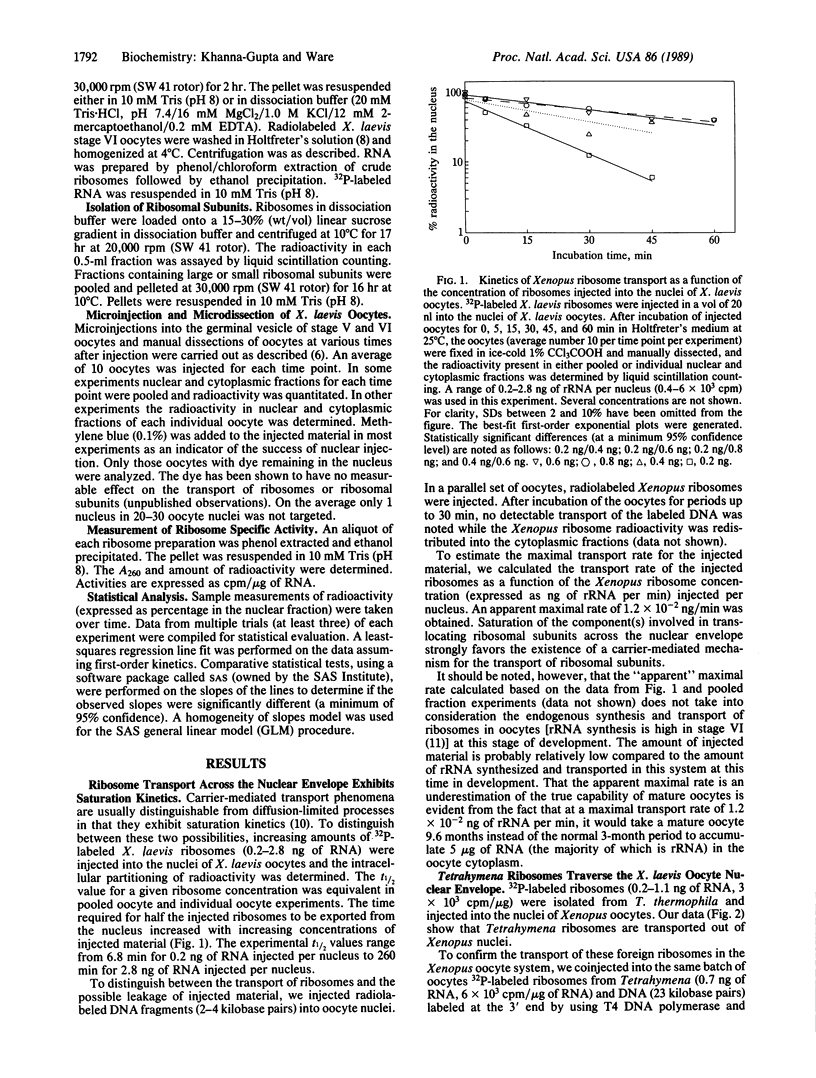
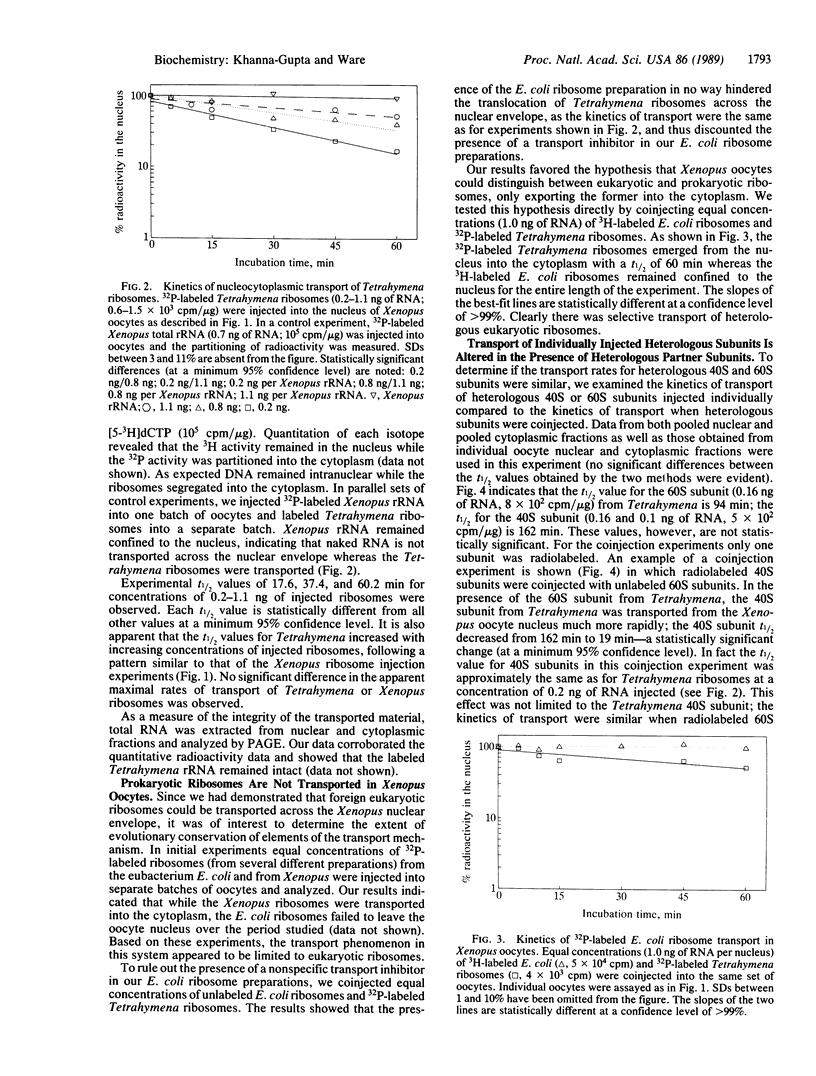
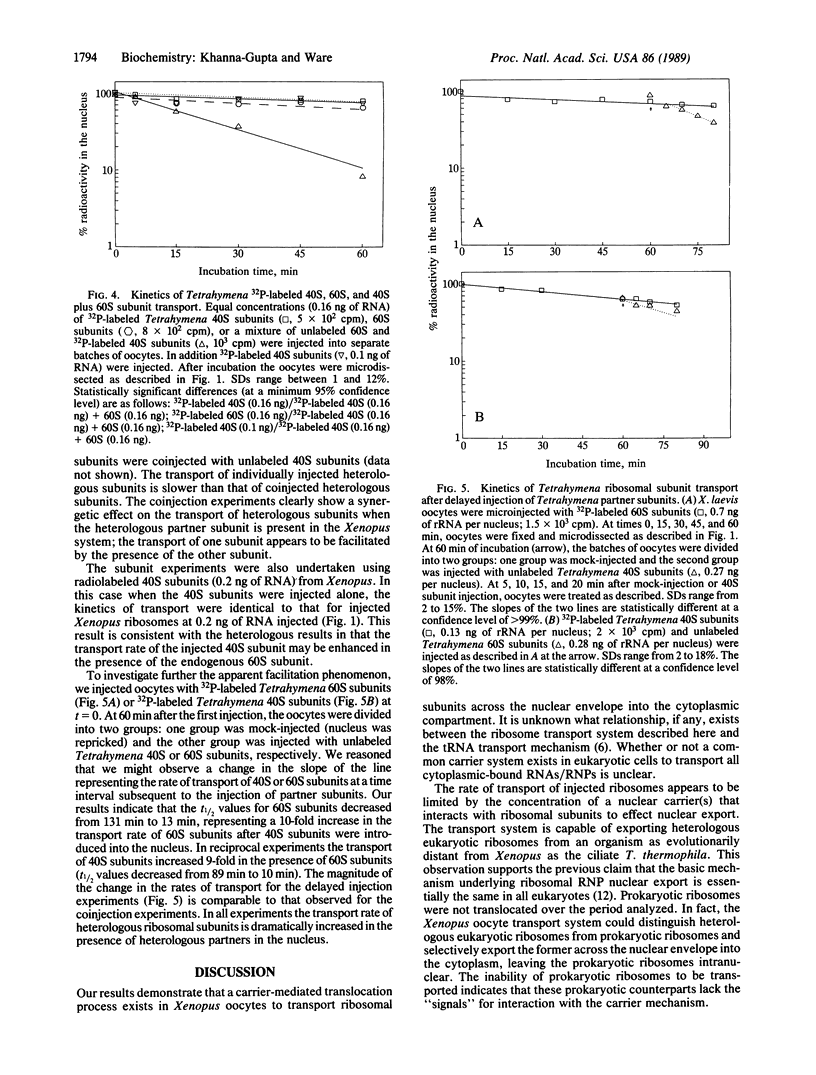
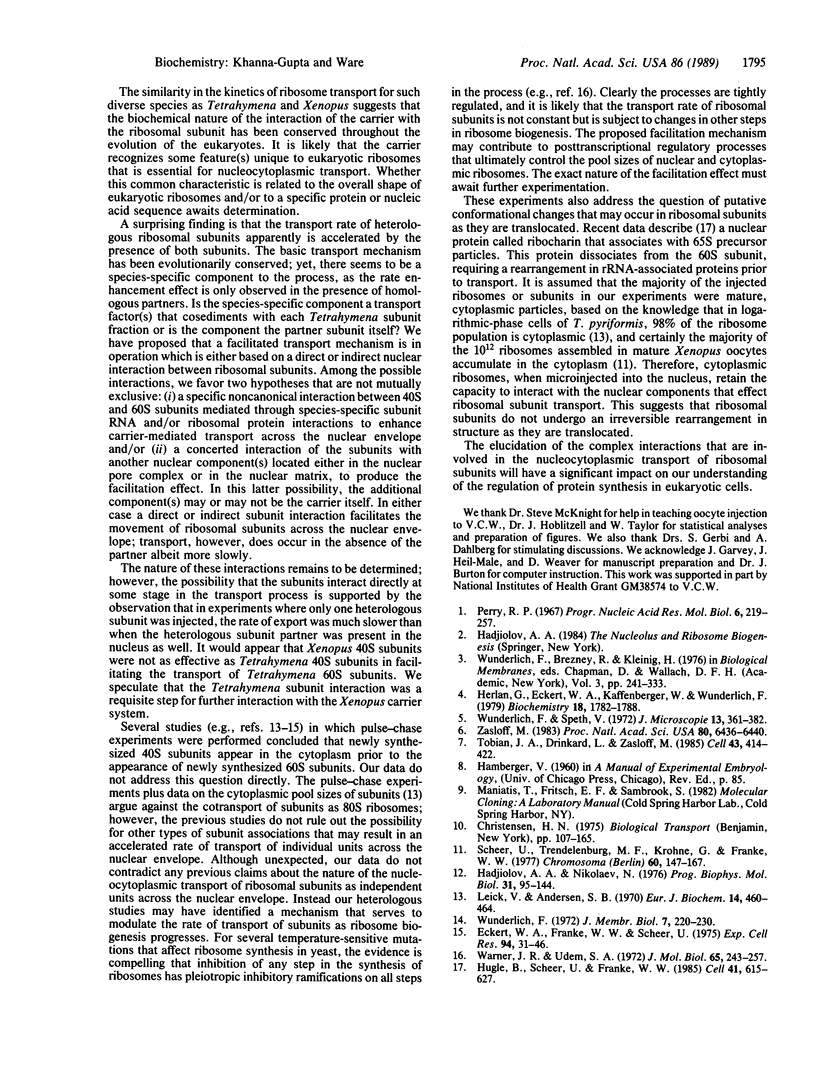
Selected References
These references are in PubMed. This may not be the complete list of references from this article.
- Eckert W. A., Franke W. W., Scheer U. Nucleocytoplasmic translocation of RNA in Tetrahymena pyriformis and its inhibition by actinomycin D and cycloheximide. Exp Cell Res. 1975 Aug;94(1):31–46. doi: 10.1016/0014-4827(75)90528-5. [DOI] [PubMed] [Google Scholar]
- Hadjiolov A. A., Nikolaev N. Maturation of ribosomal ribonucleic acids and the biogenesis of ribosomes. Prog Biophys Mol Biol. 1976;31(2):95–144. doi: 10.1016/0079-6107(78)90006-8. [DOI] [PubMed] [Google Scholar]
- Herlan G., Eckert W. A., Kaffenberger W., Wunderlich F. Isolation and characterization of an RNA-containing nuclear matrix from Tetrahymena macronuclei. Biochemistry. 1979 May 1;18(9):1782–1788. doi: 10.1021/bi00576a023. [DOI] [PubMed] [Google Scholar]
- Hügle B., Scheer U., Franke W. W. Ribocharin: a nuclear Mr 40,000 protein specific to precursor particles of the large ribosomal subunit. Cell. 1985 Jun;41(2):615–627. doi: 10.1016/s0092-8674(85)80034-9. [DOI] [PubMed] [Google Scholar]
- Leick V., Andersen S. B. Polols and turnover rates of nuclear ribosomal RNA in Tetrahymena pyriformis. Eur J Biochem. 1970 Jul;14(3):460–464. doi: 10.1111/j.1432-1033.1970.tb00311.x. [DOI] [PubMed] [Google Scholar]
- Perry R. P. The nucleolus and the synthesis of ribosomes. Prog Nucleic Acid Res Mol Biol. 1967;6:219–257. doi: 10.1016/s0079-6603(08)60528-0. [DOI] [PubMed] [Google Scholar]
- Scheer U., Trendelenburg M. F., Krohne G., Franke W. W. Lengths and patterns of transcriptional units in the amplified nucleoli of oocytes of Xenopus laevis. Chromosoma. 1977 Mar 16;60(2):147–167. doi: 10.1007/BF00288462. [DOI] [PubMed] [Google Scholar]
- Tobian J. A., Drinkard L., Zasloff M. tRNA nuclear transport: defining the critical regions of human tRNAimet by point mutagenesis. Cell. 1985 Dec;43(2 Pt 1):415–422. doi: 10.1016/0092-8674(85)90171-0. [DOI] [PubMed] [Google Scholar]
- Warner J. R., Udem S. A. Temperature sensitive mutations affecting ribosome synthesis in Saccharomyces cerevisiae. J Mol Biol. 1972 Mar 28;65(2):243–257. doi: 10.1016/0022-2836(72)90280-x. [DOI] [PubMed] [Google Scholar]
- Zasloff M. tRNA transport from the nucleus in a eukaryotic cell: carrier-mediated translocation process. Proc Natl Acad Sci U S A. 1983 Nov;80(21):6436–6440. doi: 10.1073/pnas.80.21.6436. [DOI] [PMC free article] [PubMed] [Google Scholar]


